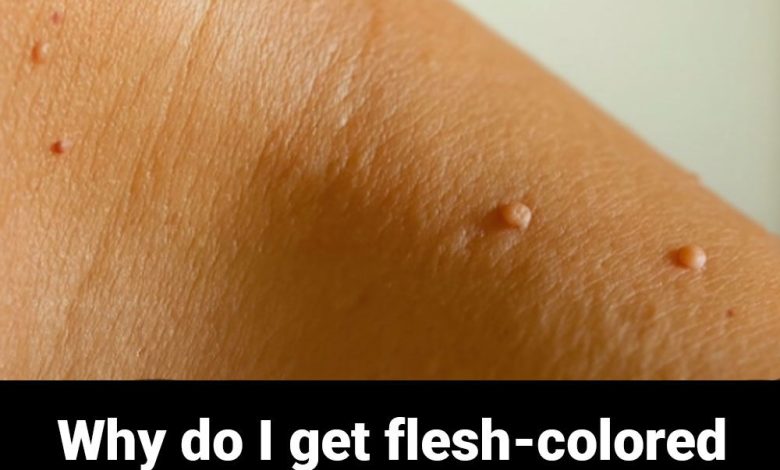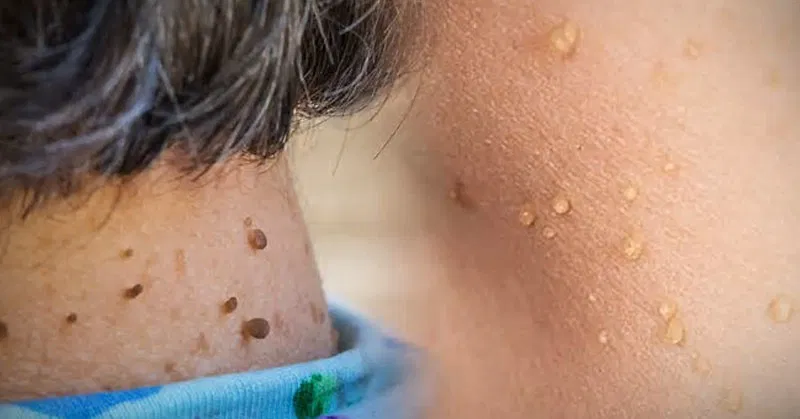Why do I get flesh-colored moles on my neck or armpits, and how do I get rid of them? Experts explain.

ADVERTISEMENT
🩺 Skin Tags: What They Are, Why They Appear, and How to Remove Them Safely
Skin tags—also known as acrochordons or soft fibromas—are small, soft growths that commonly show up where your skin folds, such as the neck, armpits, eyelids, groin, and under the breasts.
ADVERTISEMENT
They’re typically harmless and painless, but for many people, they can feel bothersome or affect confidence. So if you’ve ever wondered why they pop up and how to deal with them, here’s your go-to guide.
ADVERTISEMENT
🔍 Why Do Skin Tags Appear?
Skin tags are made of collagen and blood vessels, surrounded by skin. While they aren’t contagious or dangerous, several factors contribute to their development:
- Friction & Chafing
Repeated rubbing—whether from skin-to-skin contact or clothing—can trigger these growths, especially in high-movement areas like the neck and underarms. - Genetics
If your close relatives have skin tags, you’re more likely to develop them due to inherited traits. - Hormonal Changes
Shifts in hormone levels—during pregnancy, puberty, or due to insulin resistance—can stimulate skin cell growth, leading to skin tags. - Age
Skin tags become more common after age 40, as skin loses elasticity and is more prone to change. - Obesity & Metabolic Syndrome
Increased skin folds and friction are associated with higher risk in individuals who are overweight or have metabolic health issues. - Type 2 Diabetes
A link has been found between skin tags and elevated insulin levels—often seen in people with insulin resistance or type 2 diabetes.

✂️ How Can You Remove Skin Tags Safely?
While skin tags don’t usually require treatment, some people choose to remove them for comfort or cosmetic reasons. Always consult a dermatologist before removing one, especially if it’s large, painful, or changing in appearance.
Here are five trusted methods:
| Removal Method | Description |
|---|---|
| Cauterization | Burns off the tag with controlled heat—quick and often scar-free. |
| Cryotherapy | Freezes the tag with liquid nitrogen; it falls off over time. |
| Surgical Excision | Cuts out the tag under local anesthesia—ideal for larger or questionable growths. |
| Laser Treatment | Uses targeted light beams—minimizes skin damage and is ideal for sensitive areas. |
| Ligation (Tying off) | Cuts off blood supply with a surgical tie—tag dries and drops off within days. |
🧴 Post-Removal Care Tips
- Keep the area clean and dry
- Use any prescribed ointments to prevent infection
- Avoid scratching or rubbing
- Protect the skin from sun exposure to prevent pigmentation
🚨 When Should You See a Dermatologist?
Skin tags are benign, but seek professional evaluation if you notice:
- Rapid growth
- Bleeding
- Pain or itching
- Color changes
These signs may indicate something more than a skin tag and require medical attention.
💡 Final Thoughts
Skin tags are common, non-threatening, and often harmless—but if you’re looking to remove them, professional options are widely available. Avoid DIY removal and instead consult with a specialist for a safe, effective, and scar-free experience.
Let your skin reflect your comfort, not compromise it.




